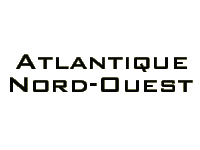|
Location
| Climate | Geography | Flora
and fauna | Humans
Location
This ecozone begins in the Gulf of St. Lawrence and continues north
along the Labrador coast to the southeastern end of Baffin Island, where
it moves offshore, extending almost to Ellesmere Island.
Climate
This ecozone extends from the Gulf of St. Lawrence along the northern
coast of Quebec and the eastern coast of Baffin Island almost to Greenland
and Ellesmere Island. Cold waters from the Labrador Current meet warmer
waters from the Gulf Stream and the St. Lawrence river, which also adds
fresh water to the salty ocean currents. Winter brings ice to much of
the ecozone; the St. Lawrence river usually freezes over and icebergs
are plentiful in the northern regions. Tides in the north may be up
to 12 metres high, the tides in Ungava Bay rivaling those of the famous
Bay of Fundy.
Geography
Fjords, cliffs, and bald rock are found along the shores here, the result
of grinding glaciers during the last Ice Age 10 000 years ago. The continental
shelf means that the maximum depth never much exceeds 300 metres.
Flora
and Fauna
Plants
To the north, only algae grow, but further south conditions allow for
kelp, phytoplankton, and seaweeds.
Animals
Mammals
Aquatic mammals found here include humpback
whales, atlantic
right whale, bowhead
whale, blue
whale, beluga,
fin whales,
minke whales,
sei whales,
blue whale,
orca,
sperm whale,
poroises, longsnout
dolphin, whitebeak
dolphin, bearded
seal, and harp
seal.
Birds
Gannet,
razorbill,
thick-billed murre, black
guillemot, northern
fulmar, and common
ringed plover are just a few of the bird species to be found here.
Fish
The atlantic tomcod is one of the predators here, preying on such species
as rainbow smelt and mummichog. Some of the species that live in the
ocean but enter freshwater to spawn are sea lamprey, atlantic sturgeon,
alewife, atlantic salmon, arctic char, and American eel.
Crustaceans
Some of the crustaceans found in these waters include stone
crab, Neolithodes
grimaldii, American
lobster, rock
crab, Sclerocrangon
boreas, Acadian
hermit-crab, striped
pink shrimp, and Lebbeus
groenlandicus.
Humans
In the northern section of this ecozone, human activity is largely subsistence
activities and commercial fishing. The southern section is the Gulf
of St Lawrence, and must deal with the pollution of that river, including
agricultural runoff, municipal sewage and industrial pollution.
 

|
|







